
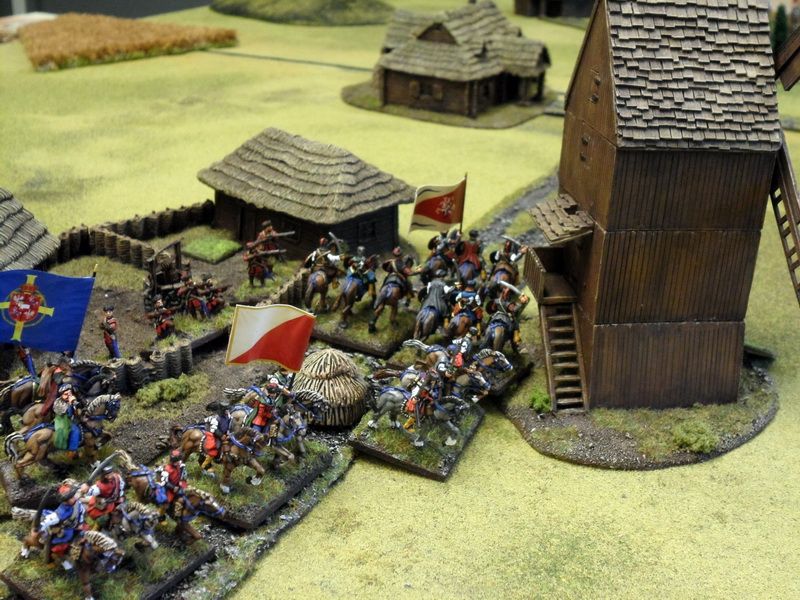
 Second battle played this weekend with Andreas, we decided to change things up again and rewrite the lists. I said I was going to pick the Polish Skirmish 1656-60 force, Andreas kept to the Swedish Skirmish force of the previous battle.
Second battle played this weekend with Andreas, we decided to change things up again and rewrite the lists. I said I was going to pick the Polish Skirmish 1656-60 force, Andreas kept to the Swedish Skirmish force of the previous battle.As I didn't know how much Andreas was going to field I was cautious and kept my force to a medium size. Andreas pulled out the exact same list. The difference in points was now Swedish 7 to Polish 10!
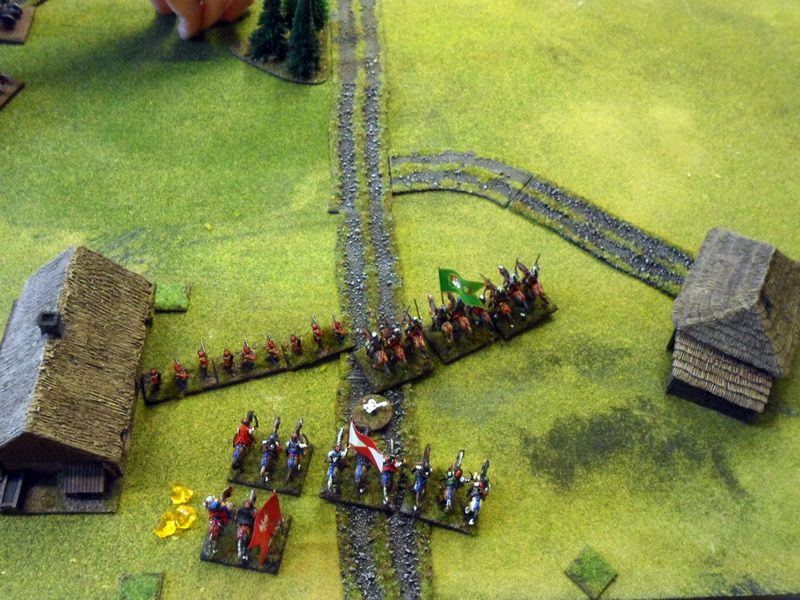 Andreas rolled on the scenarios again, this time picking the "Foraging supplies", which was worth "2 FSP" for the weaker player. As an additional effect Andreas rolled "Unexpected reinforcements" which meant that any unit of his that was killed, could return as reinforcements.
Andreas rolled on the scenarios again, this time picking the "Foraging supplies", which was worth "2 FSP" for the weaker player. As an additional effect Andreas rolled "Unexpected reinforcements" which meant that any unit of his that was killed, could return as reinforcements.The lists:
Andreas ran the Swedish detachment, again on 7 FSP.
His force contained:
1 Colonel with 3 command points
6 bases of musketeers
4 bases of reiters
2 bases of veteran reiters with arquebus
1 Regimental gun
1 special model - the Peasant informer)
My Polish 1656-60 skirmish force on 10 FSP contained:
Colonel 3 command points
Rota master 1 command point
3 bases of Pancerni with spears
3 bases Elite cossack style cavalry
6 bases cossack style cavalry
6 bases of Polish dragoons
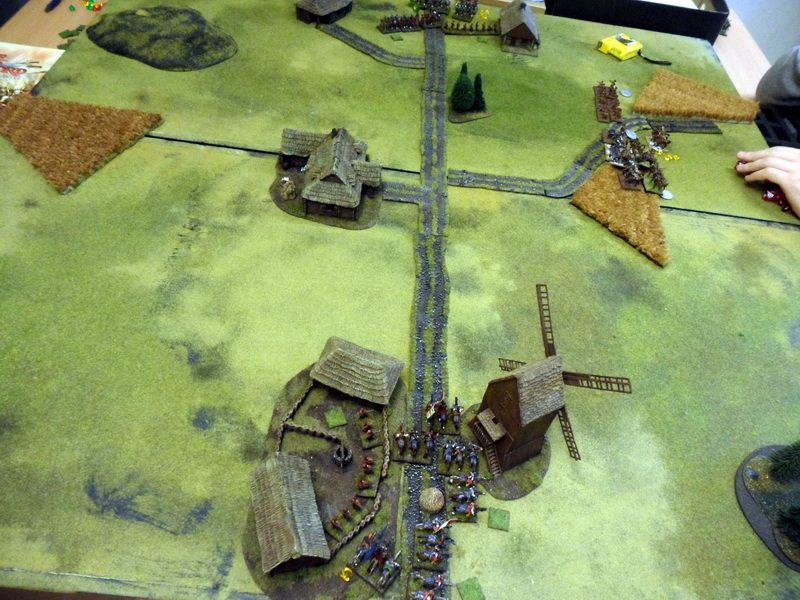
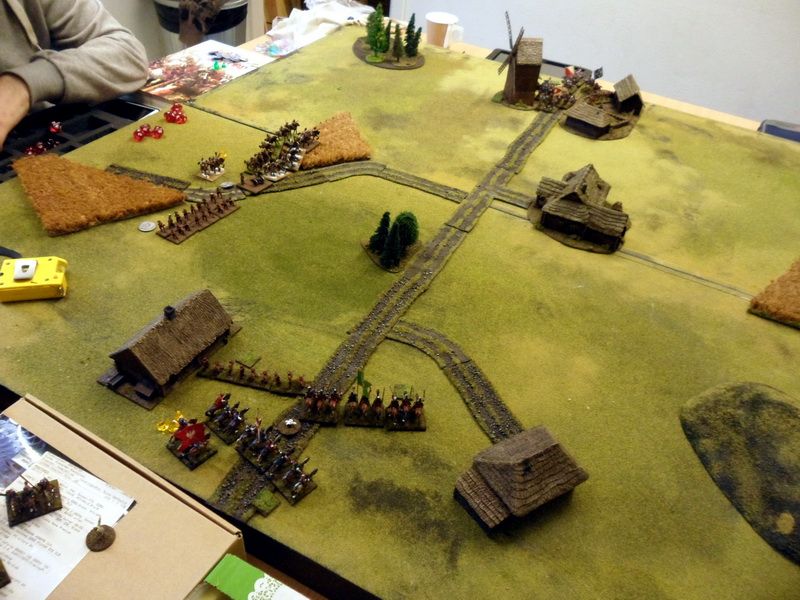
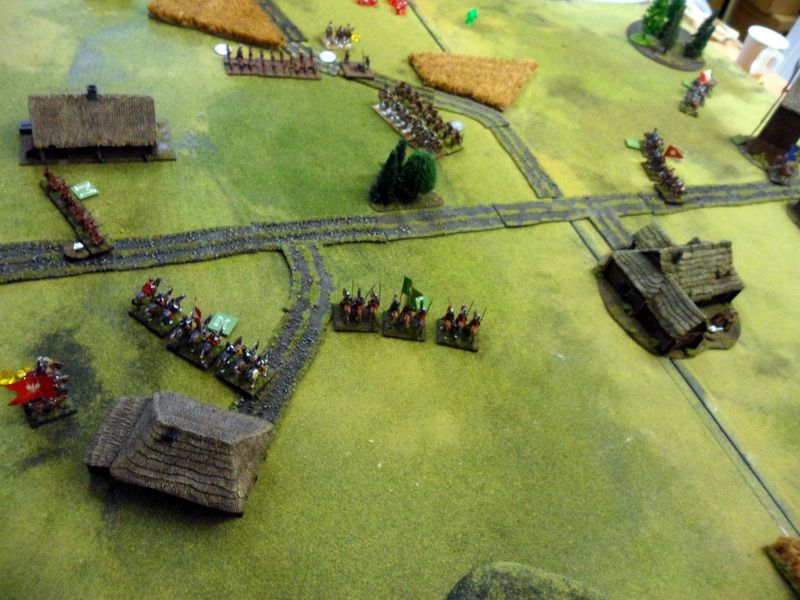 Now this scenario is quite tricky. The stronger player must defend two supply points at the opposite ends of the battlefield. The defender only gets points if both supply points are left unharmed. As soon as 1 supply point is taken the defender has 0 points for the scenario while the attacker gets 2. If the attacker takes both points he gets 6 points for the scenario. The way this scenario is played best is for the attacker to focus on one point and as soon as it is taken withdraw and keep losses to a minimum. Taking both points will be too difficult and
Now this scenario is quite tricky. The stronger player must defend two supply points at the opposite ends of the battlefield. The defender only gets points if both supply points are left unharmed. As soon as 1 supply point is taken the defender has 0 points for the scenario while the attacker gets 2. If the attacker takes both points he gets 6 points for the scenario. The way this scenario is played best is for the attacker to focus on one point and as soon as it is taken withdraw and keep losses to a minimum. Taking both points will be too difficult and  prolonged battle with a stronger player is unwise.
prolonged battle with a stronger player is unwise.This battle was extremely dynamic and unpredictable.
The Polish force deployed 1 company of dragoons at each deployment zone to provide fire support. Then the Pancerni and Elite cossack style cavalry deployed to the left in the more exposed area, while the two regular cossack banners deployed to the right in the built up area.
Things looked grim for the tiny Swedish force. The Poles, careful to keep out of range from the Swedish muskets and artillery began a moving around both flanks, slowly forming a very dangerous encirclement. The Poles took their time, in no particular hurry. They knew the Swedes would have to act first in order to get past them and
 reach the left supply point.
reach the left supply point. The Swedish reiters then finally decided to ride right, trying to avoid at least some of the Polish units approaching them. What the Polish commander had not considered was that the Swedes were trying to get in close and shoot the second in command - a plan that ultimately failed. What happened instead was a crazy charge from all direction as no less than initially 2 Polish units fell upon the Swedish squadron from the front, flank and rear!
The Swedish reiters then finally decided to ride right, trying to avoid at least some of the Polish units approaching them. What the Polish commander had not considered was that the Swedes were trying to get in close and shoot the second in command - a plan that ultimately failed. What happened instead was a crazy charge from all direction as no less than initially 2 Polish units fell upon the Swedish squadron from the front, flank and rear!What looked like it would be the end of a very short battle turned into complete pandemonium Swedish artillery stopped the charge of the Elite cossack style cavalry, the Reiters repelled a disasterous charge of the regular cossack style cavalry. The Poles were now disorganized, but regrouped and tried again, another charge failed, stopped by reiter pistols, case shot and musketeer fire the Polish
 units rode through hell to get to the enemy, unfortunately only the Pancerni made it into contact and they were repelled. The effect on
units rode through hell to get to the enemy, unfortunately only the Pancerni made it into contact and they were repelled. The effect on 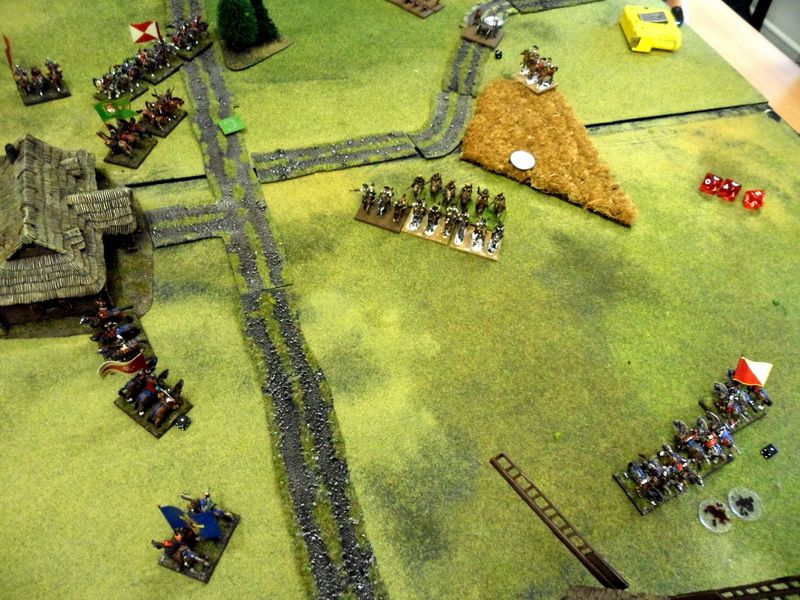 the battlefield was amazing. Just as the Polish units had closed in on the Swedes from all sides, the Poles had now been thrown back and in some cases chased by the Swedish retiers who couldn't believe their luck. Furthermore half of the Polish cavalry were cut off from the Colonel and had to rely on the Rotamaster to rally them - unfortunately his single command point was not enought to make a difference and two banners remained disorganized for the remainder of the game.
the battlefield was amazing. Just as the Polish units had closed in on the Swedes from all sides, the Poles had now been thrown back and in some cases chased by the Swedish retiers who couldn't believe their luck. Furthermore half of the Polish cavalry were cut off from the Colonel and had to rely on the Rotamaster to rally them - unfortunately his single command point was not enought to make a difference and two banners remained disorganized for the remainder of the game.The Pancerni on top of that began fleeing from the enemy, and were barely rallied by the Polish Colonel - this was at the end of the game which meant that they would not be able to get a new order for the last turn!
 This is when the Swedish and Polish micro management of troops really began, when both players became very aware of all the tactical steps that needed to succeed in order to pull off a victory.
This is when the Swedish and Polish micro management of troops really began, when both players became very aware of all the tactical steps that needed to succeed in order to pull off a victory. 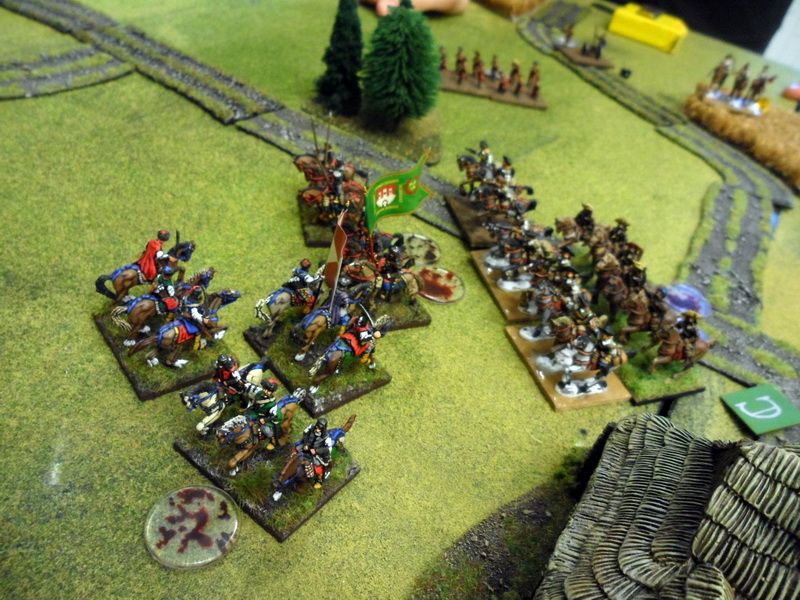 First of all the single Polish cossack style unit would be unable to break the Swedish reiters by itself, the Swedish reiters could not charge anyone because they needed a Move or Defend order to claim the supply point.
First of all the single Polish cossack style unit would be unable to break the Swedish reiters by itself, the Swedish reiters could not charge anyone because they needed a Move or Defend order to claim the supply point. The supply point was defended by Polish dragoons alone.
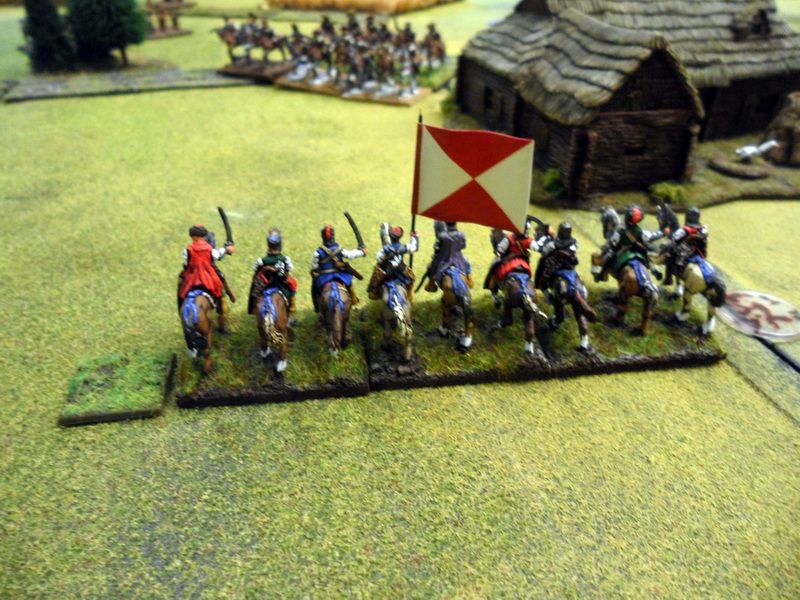 The turn of final events went down as such:
The turn of final events went down as such:Reiters rode past the Polish cavalry and up close to face off against the Polish dragoons. The Dragoons fired defensive fire at the Reiters, but those casualties inflicted were1 wound short of forcing the Reiters to to take a morale test. In return Swedish musketeers and the artillery fired
 everything they had at the Dragoons, the Poles lost enough men to force a morale test - but they passed it without any boosting modifiers since the Polish commander was out of command points!
everything they had at the Dragoons, the Poles lost enough men to force a morale test - but they passed it without any boosting modifiers since the Polish commander was out of command points!Now the Polish cavalry fired at the flank of the Reiters only needing to inflict a single wound to force a test- but failed to hit them! And the Reiters fired pistols in the face of the Polish dragoons who took even more wounds and finally their morale broke and they began fleeing, leaving the supply point open for destruction and the Swedes grasped those 2 victory points and the game was thus decided on the edge of a knife with the last die roll at the very end of turn 6!!
And so ended one of the most exciting games I've played in a long while. We counted the losses.
Despite the ferocious fighting the casualties on both sides were very light. The Swedes had lost a single base, the Poles had lost 3 bases. The Polish units were however peppered with wound markers, and so were the Swedish reiters.
The battle ended 5-1 to the Swedes. 2 points for having destroyed 1 supply point, and 3 points for having less than 10 % casualties. The Poles got 1 point for having below 25% casualties. A Swedish Tactical victory. And it had been SO close of ending up a Polish tactical victory, just a die roll away!
This was a super exciting and very dynamic game. I think we both start to learn how to handle our armies, how to play the scenarios in the book and how to play skirmish level games which require a specific mindset. Keeping casualties down is crucial in this game as you may have noticed. Keeping the enemy from achieving his goal is often more rewarding than killing him.
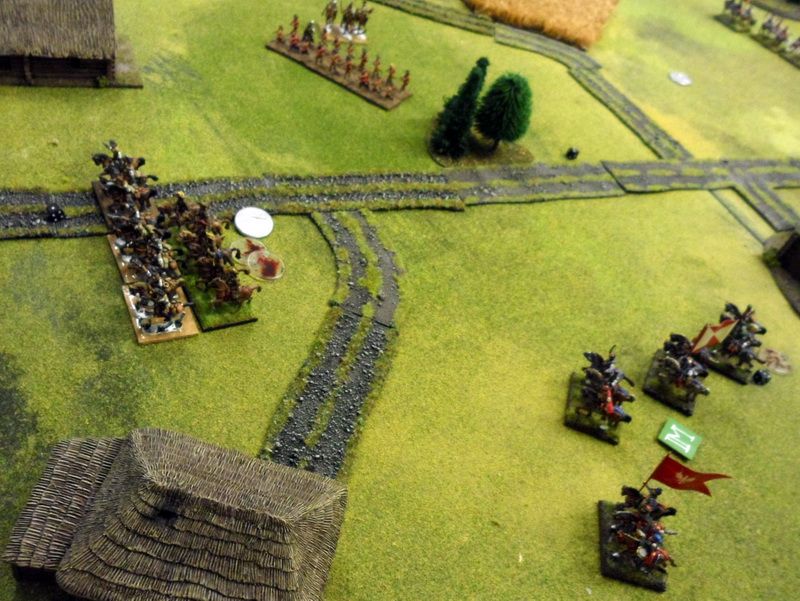
No comments:
Post a Comment